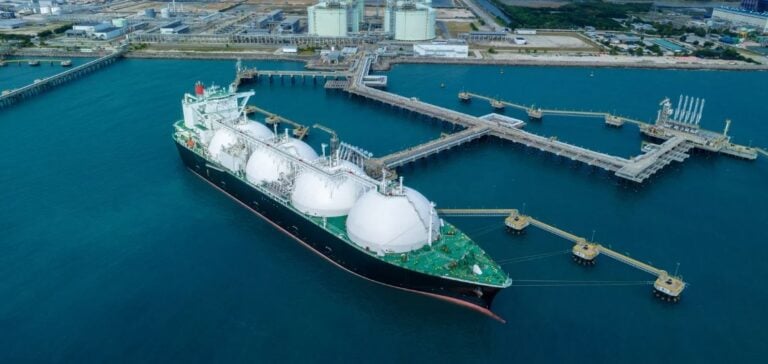Traded volumes for liquefied natural gas (LNG) futures on the Intercontinental Exchange (ICE) reached unprecedented levels in October, according to exchange data and market insights. This significant increase reflects heightened market preparation for the winter season, despite low demand across some Asian regions.
In October, traded volumes for Japan Korea Marker (JKM) LNG futures on ICE rose by 32.61% year-over-year, reaching 100,755 lots, equivalent to approximately 19.38 million metric tons of LNG or 305 cargoes. This volume represents a 5.36% increase from September, fueled by substantial transactions recorded on October 25, with more than 10,000 lots traded for contracts spanning December 2024 to December 2026.
Increased Trading Activity Despite Weak Demand Signals
According to a broker, the high transaction level might indicate direct trades without intermediary involvement, suggesting risk-hedging strategies by some market players. A Singapore-based trader corroborated this view, noting that these trades could be driven by hedging practices in anticipation of uncertainties in the energy market.
As part of Platts’ “Market On Close” assessment process, traded volumes of short-term JKM LNG futures reached 3,185 lots in October, marking a 15.4% increase from September and a 198.29% jump from the previous year.
Record Open Interest on JKM LNG Futures
Open interest for JKM LNG futures, representing the number of open positions awaiting settlement, also hit an all-time high, with 131,678 lots by the end of the month. This total includes 129,068 lots for standard futures and 2,610 lots for immediate-delivery futures. This record level indicates heightened anticipation of LNG market activity for the winter season, as weather forecasts can influence energy needs.
Despite the heightened activity on futures, JKM LNG options saw a 65% drop in traded volumes, falling to 800 lots. Open interest for options stood at 12,100 lots, down 13.39% from September.
LNG Spot Prices and Demand Conditions in Asia
LNG spot prices in Asia remained relatively stable throughout October, with the JKM benchmark price holding around $13.384/MMBtu, a slight increase from $13.219/MMBtu in September. In the Japan-South Korea-Taiwan-China (JKTC) region, demand remained low in October, with several utilities securing their winter supply.
In China, where LNG inventories are high, some market participants opted for spot sales, hoping prices would drop to $12/MMBtu to attract new Chinese buyers. This moderate demand situation could, however, shift due to unforeseen weather changes, such as a colder-than-expected winter.
Limited Arbitrage Between Asia and Europe
While the market closely monitors supply developments in the Atlantic basin, arbitrage opportunities between Europe and Asia in July were limited due to tightened price spreads. According to Platts, the East-West arbitrage spread for January/December was estimated at less than $0.50/MMBtu, making U.S. cargo shipments to Asia less attractive. Nevertheless, some traders are considering redirecting cargo to the Far East due to low freight rates and available shipping vessels.






















